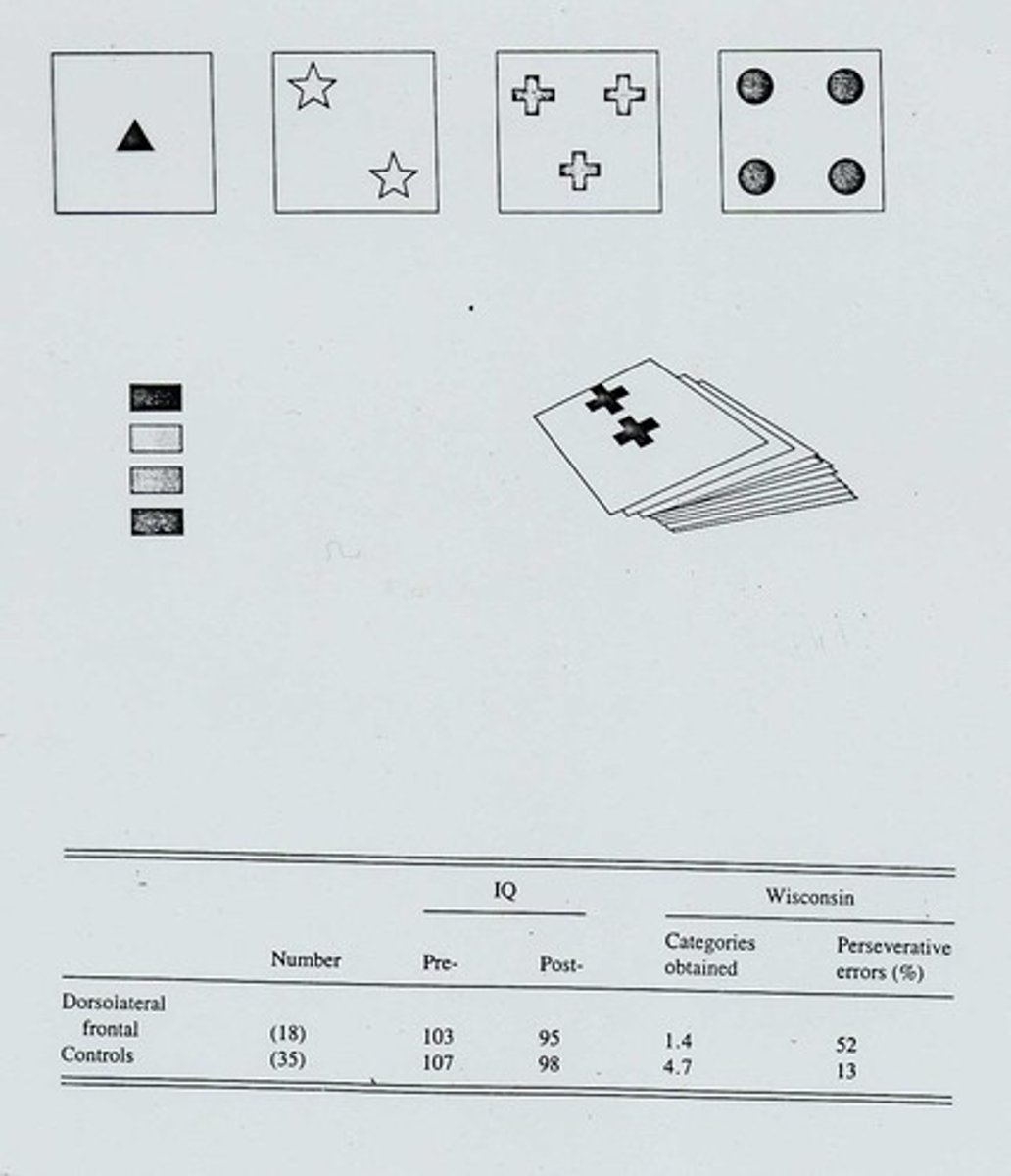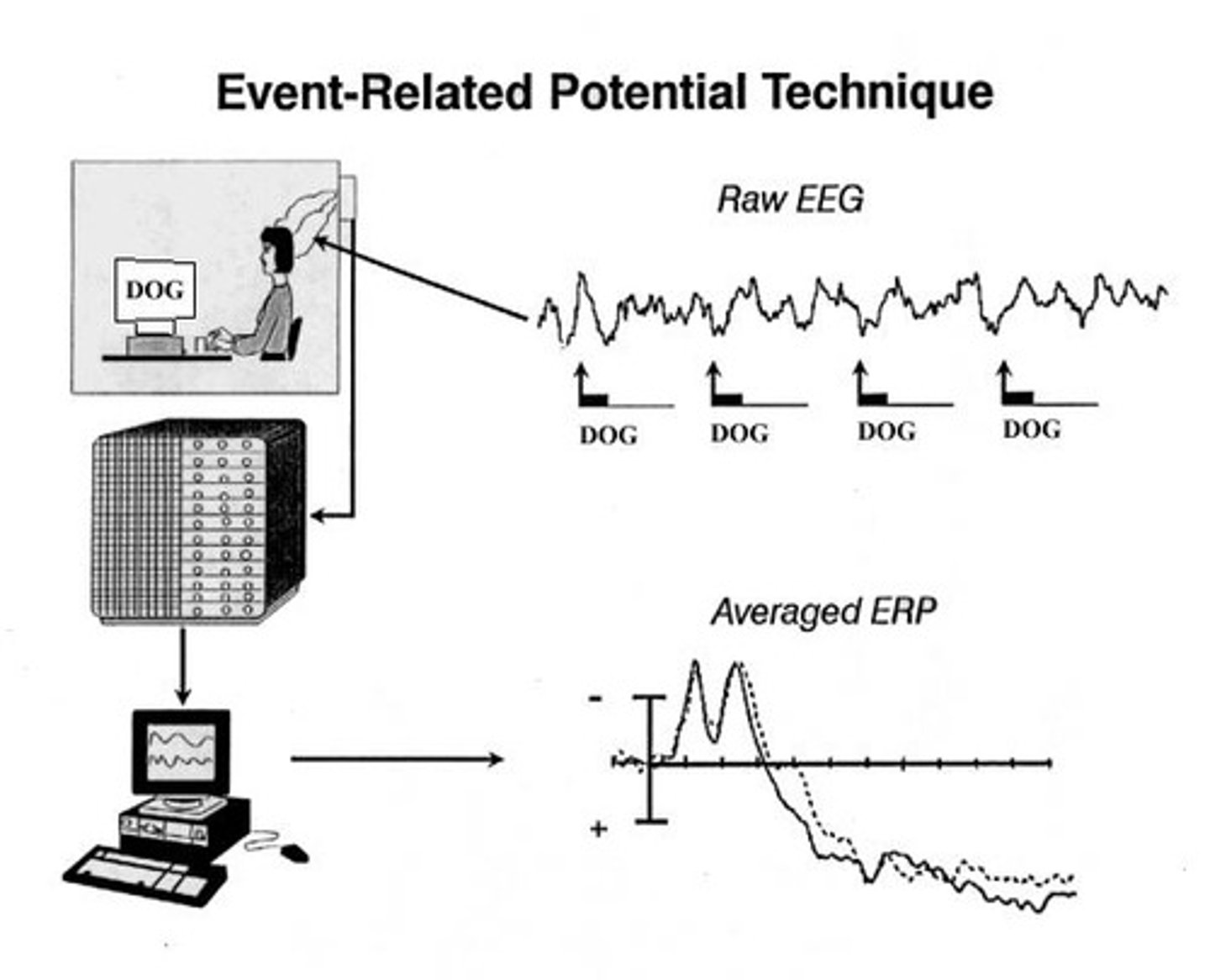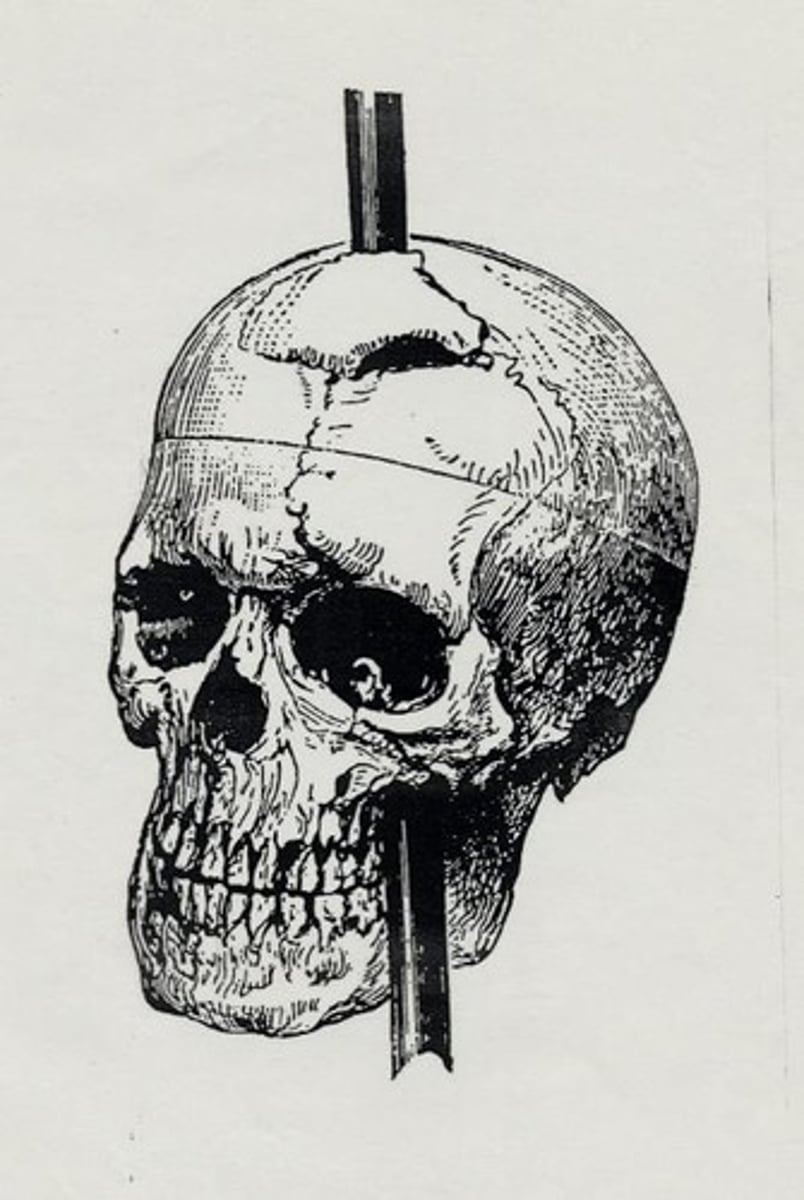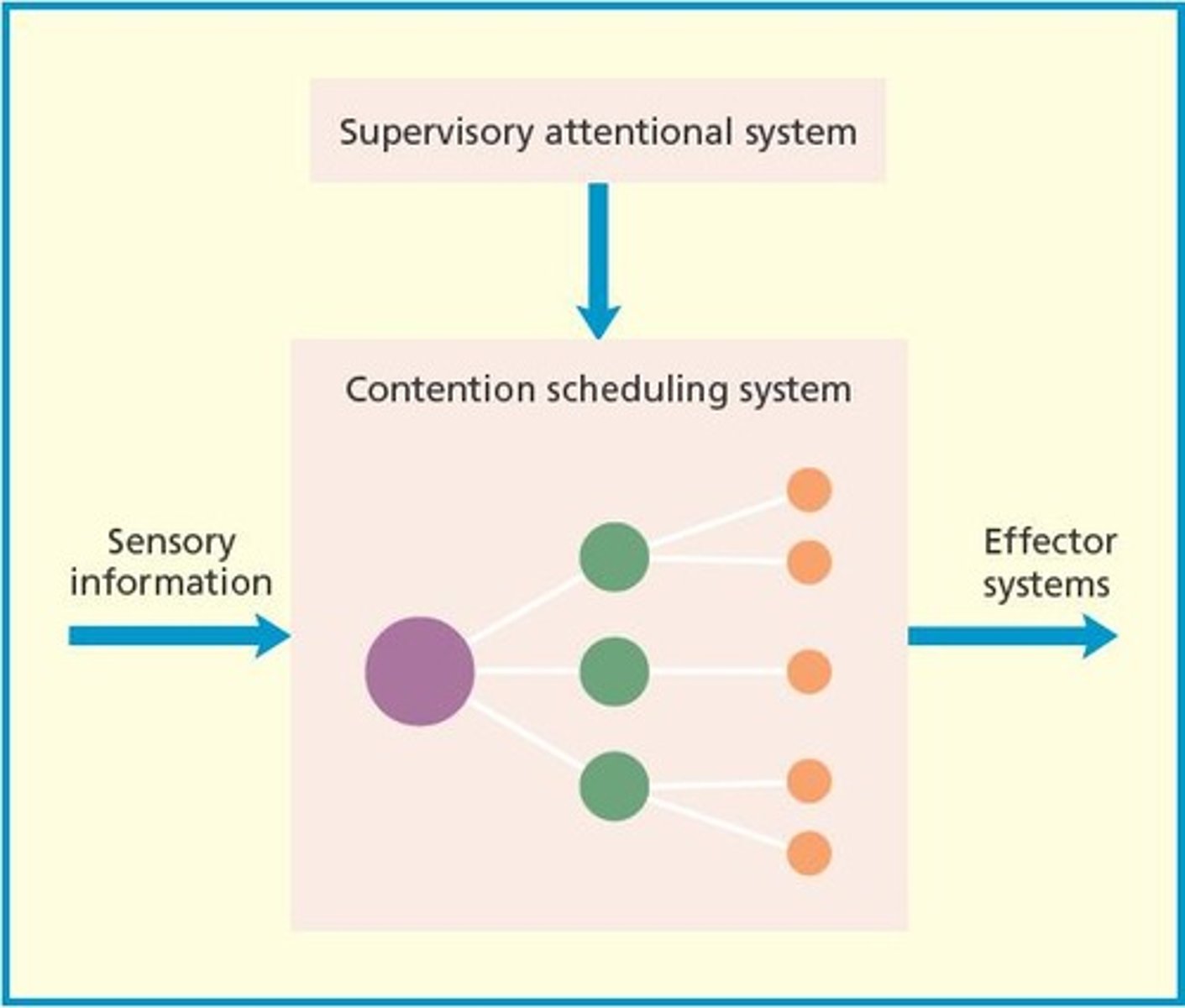Understanding the Prefrontal Cortex and Its Functions
1/26
There's no tags or description
Looks like no tags are added yet.
Name | Mastery | Learn | Test | Matching | Spaced |
|---|
No study sessions yet.
27 Terms
Medial Dorsal Nucleus
Thalamic nucleus projecting to prefrontal cortex.
Hebb's Findings
Frontal lobe damage showed no IQ change.
Goldstein's Argument
IQ tests miss higher-level cognitive deficits.
Contention Scheduling
Routine behavior selection based on perceptual triggers.
Behavioral Rigidity
Inability to adapt to new rules in tasks.
Wisconsin Card Sorting Test
Measures cognitive flexibility and rule-switching ability.

Stuck-in-Set Perseveration
Difficulty inhibiting previously learned schemas.
Utilization Behavior
Inappropriate use of objects despite instructions.
Distractibility
Tendency to be sidetracked by irrelevant stimuli.
Event-Related Potential (ERP)
Brain response measured during attention tasks.

Standard Tones in ERP Study
Short tones used to assess attention focus.
Target Tones in ERP Study
Longer tones indicating focus detection task.
Granular Frontal Cortex
Region involved in higher cognitive functions.
Frontal Lobe Function Debate
Conflicting views on intellectual roles of frontal lobes.
Phineas Gage
Case study illustrating frontal lobe's role in personality.

Patient EVR
Demonstrated impaired organization despite normal IQ.
Luria's Work
Highlighted behaviors sensitive to frontal dysfunction.
SAS Model
Supervisory attentional system for controlled behavior.

Knight et al. Study
Investigated distractibility through ERP measurements.
Frontal Patients in ERP
Showed increased distractibility compared to controls.
Behavioral Rigidity Indicators
Perseveration and distractibility in frontal lobe patients.
Cognitive Skills Assessment
Tests measure routine knowledge, not higher functions.
Conflict with Desires
Frontal lobe damage leads to impulsive behavior.
Capricious Decision Making
Frequent changes in plans without follow-through.
Impaired Supervisory Function
Damage leads to reliance on automatic responses.
Capture Error
Distractibility caused by irrelevant associations.
Norman & Shallice
Developed the SAS model for attentional control.